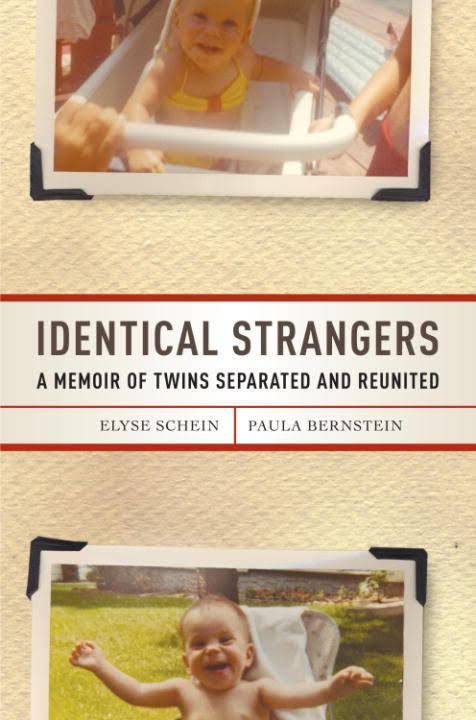Originally published 2007 | ||
 | ||
Identical Strangers: A Memoir of Twins Separated and Reunited is a 2007 memoir written by Elyse Schein and Paula Bernstein and published by Random House. The twins were given up by their mentally ill mother and separated as infants, in part, to participate in a twin study. They were adopted by separate families who weren't told they were twins. Soon after they met for the first time in 2004 at the age of 35, they began writing the book. Of the 13 children involved in the study, three sets of twins and one set of triplets have discovered one another. One or two sets of twins may still not know they have an identical twin.
Twin study
Viola Bernard, a renowned New York psychologist, had persuaded Louise Wise Services, the adoption agency, to send twins to different homes, without telling the respective adoptive parents that the children were twins, and then researchers secretly followed their progress. She believed that identical twins would better forge individual identities if separated. By the time the twins started to investigate the adoption, Bernard had already died, but the twins found New York University psychiatrist Peter Neubauer who had studied the twins.
The twin study they were involved with was never completed. The practice of separating twins at birth ended in the state of New York in 1980, a year after the Bernard study ended. Neubauer reportedly had Yale University lock away and seal the study until 2066. He realized that public opinion would be so against the research that he decided not to publish it. Efforts to have Yale University release the records by the sisters and other twins have failed.
The Neubauer study differs from all other twin studies in that it followed the twins from infancy. The biggest surprise to come from the Bernard research is that twins reared apart aren't any more different than those reared together. This suggests children's differences are not forged by their families but by other, subtler factors.
